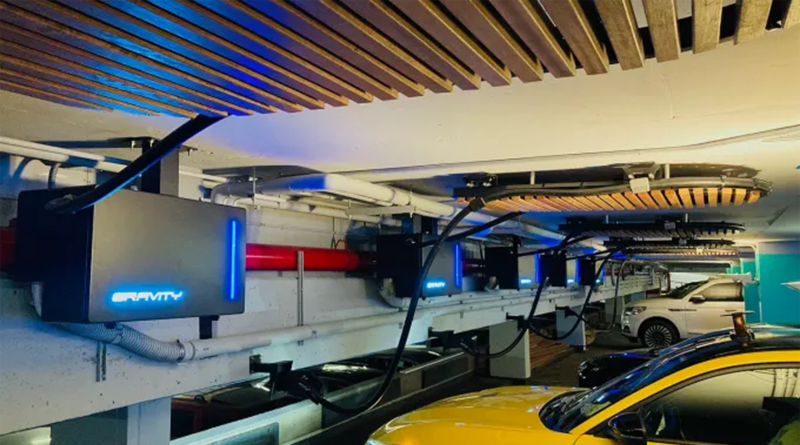New York City Gets 500kW Charging Stations
In a move that Reuters perhaps wrongly called the “fastest EV charger in US,” Gravity Mobility opened up some 500kW chargers to other companies in New York City. While not technically the fastest ever (they may only tie for first place), it’s still a big move that signals that the kilowatt wars might just continue.
Gravity Mobility is an EV infrastructure startup that’s backed by Google, and it has opened 24 500-kilowatt charging stations to major fleet operators. Perhaps more importantly, the company plans to offer thousands more of these super duper fast chargers across the United States. “If you look at how many (Tesla) Superchargers are added per year, we can add that many or more to grow our network. There’s nothing blocking that,” Gravity’s CEO Moshe Cohen told Reuters.
Gravity is not the only company offering this level of fast charging. Mercedes-Benz recently opened a charging station in Georgia with a claimed capacity of 500kW, but later information says that the stations are only currently offering 400kW of actual throughput. This makes sense because almost no vehicles can actually pull 500kW from a charging station, so it’s not necessary yet.
The bigger question is whether 500kW charging stations or even megawatt charging (1000kW) will be a big thing outside of medium and heavy duty vehicles in the future. The need for those power levels is obvious for semi trucks and other large vehicles with amazingly big battery packs. With power consumption that’s better measured in kilowatt-hours per mile than miles per kilowatt-hour, big power is needed to get a charge in a reasonable amount of time and get back on the road. But, for vehicles that can charge up enough to get to the next station in 15 minutes, 250-350 kW charging is plenty.
The “I need 500 miles of range in 5 minutes like a gas station” crowd would actually be pretty hard to serve, because that means light-duty vehicles charging at much greater than 500kW peak, and it requires huge battery packs. To deliver that much power would require expensive grid upgrades in most areas, and to give everyone a 200kWh battery pack (or much bigger) would require a much more robust supply chain for batteries than we have today.
So, the reality is that these fast stations are probably not going to be very useful for 5-10 years, if not longer, due to these constraints. But, if a company thinks its hardware will last that long and not need an upgrade to NACS 3 or whatever we’ll have for flying cars in 2035 (kidding), it is obviously free to get the jump on those speeds!
What we’re probably really seeing here is a preview of what we’ll see in a lot more places in a decade. We shouldn’t expect to see the average EV charging station offer much more than 250kW in most places for the next few years. After all, many rural areas don’t even have 50kW fast charging yet, and companies like Electrify America are still struggling to get existing 350kW stations up to par.
But we will probably eventually get there!
Featured image by Gravity.
Have a tip for CleanTechnica? Want to advertise? Want to suggest a guest for our CleanTech Talk podcast? Contact us here.
Latest CleanTechnica.TV Video

CleanTechnica uses affiliate links. See our policy here.

